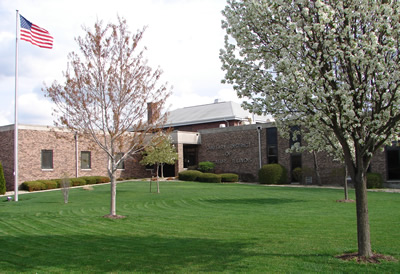
SDD Administration Building
Mission
The mission of the Operations Department is to accept all reasonable water borne wastes from the residences, businesses and industries in the District’s service area. The Operations Department must operate the facility to handle the wastewater in a manner that safeguards the environment and enhances the area’s water resources through the following steps.
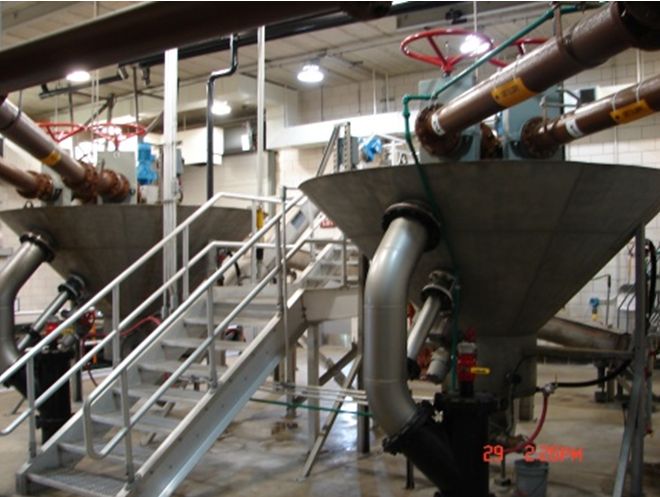
Preliminary Treatment
Preliminary Treatment:
Preliminary treatment is accomplished by screening of all wastewater to remove large objects like sticks, clumps of rags, cans, leaves and tissue paper. Grit removal where heavy inorganic such as sand, cinders, egg shells, etc. are settled and then removed. These waste products are removed to a landfill for long-term disposal.
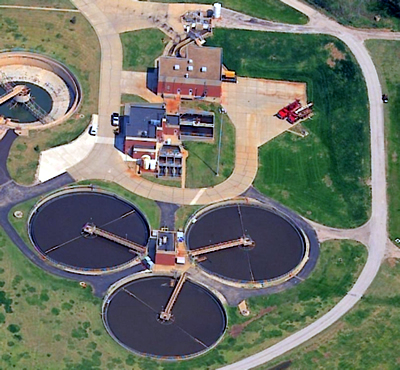
Primary Treatment
Primary Treatment:
Primary treatment is accomplished by the process of clarification which is to separate solid particles from the liquid. The clarifier tanks provide a volume sufficient to create a quiescent flow zone. During this period of peaceful non-turbulent flow in the clarifier(s) solid particles are given a chance to settle to the bottom and lighter particles like fats and grease are allowed to float to the top where both are removed and sent to digesters for further treatment. The clear clarified liquid (Primary Effluent) is drawn from the clarifier about two feet from the top of the liquid and transferred to the secondary treatment for additional treatment.
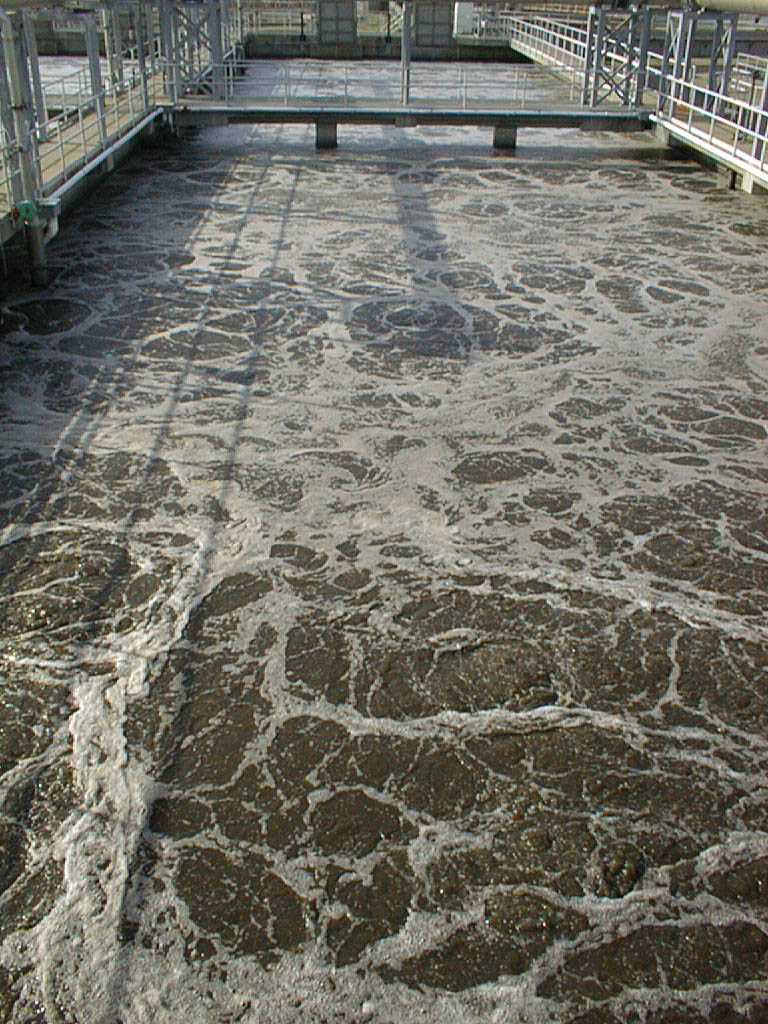
Secondary Treatment
Secondary Treatment: (includes Nitrification)
Currently the District employs a two step activated sludge process for secondary treatment, they are;
Activated Sludge Tanks: Primary effluent is mixed with the sludge being returned from the secondary clarifiers (Return Activated Sludge, RAS) then evenly distributed between the five aerated treatment tanks. The biomass (bacteria) within the tanks will breakdown the waste in the wastewater by the processes for adsorption and absorption. Activated sludge secondary treatment being by design an aerobic (in the presence of air) system requires a constant flow of air to the treatment tanks. Blowers are used to provide the air for the necessary biological processes to take place.
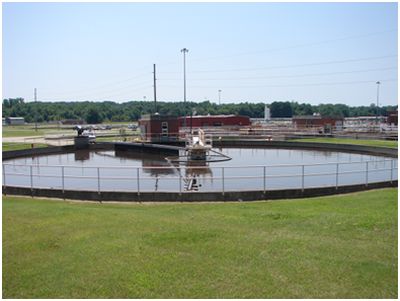
Secondary Treatment
Secondary Clarifiers: Like the primary clarifier tanks secondary clarifiers provide a volume sufficient to create a quiescent flow zone. During this period of peaceful non-turbulent flow in a clarifier, biomass solids produced in aeration system are given a chance to settle to the bottom these solids are returned to the activated sludge tanks and are referred to as RAS. A portion of the RAS is removed and sent to the digesters to allow for the control of the treatment by controlling the amount and age of the bacteria within the system, this is called waste activated sludge or WAS. And any remaining floatable solids that rises to the surface of the secondary clarifiers is also wasted to the digesters.
Note: The secondary treatment system utilized at the District is sufficient in size and operated in a way in which Nitrification treatment occurs. Nitrification treatment is a set of process conditions that allows for the reduction and conversion of ammonia to nitrates and nitrites which protects the local streams from excessive amounts of algae growth (Eutrophication).
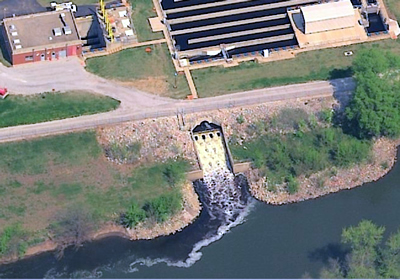
Effluent Treatment
Effluent Treatment:
Effluent treatment at the facility consists of chemical processes and cascade aeration. The chemical processes used are; disinfection utilizing chlorine bleach and liquid ammonia, and dechlorination using Sodium Bisulfate.
As the flow leaves the plant it flows over a cascade aerator which adds Oxygen to the cleaned wastewater through the action of creating turbulence in the flow and allowing oxygen from the air to enter into the water before it enters the Sangamon River.
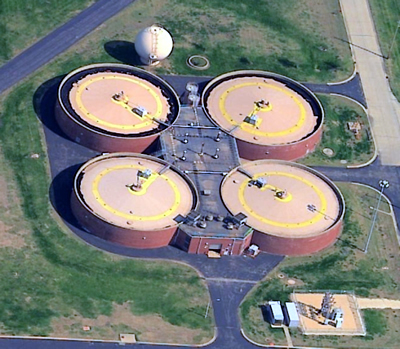
Sludge/Biosolids Treatment
Sludge/Biosolids Treatment:
Primary Sludge, Secondary Waste Activated Sludge (WAS), and all scum is removed from the systems clarifiers and pumped to one of four Primary anaerobic (in the absence of air) digesters where it is treated to remove the organic wastes before the residuals also known as biosolids are stored for a short time in secondary anaerobic digesters and then pumped to storage lagoons for long-term storage until it can be disposed on local farmland.
A useful by-product of anaerobic digestion is the production of methane gas; the District uses this gas to reduce its energy consumption which lowers costs and further protects the environment by reducing the load on the electrical power grid.
Generally in the fall of the year the biosolids in the lagoons are applied to farmland as fertilizer using an injection method.
Notable:
The Sanitary District of Decatur employs seven Class 1 Wastewater Treatment Works Operators certified by the Illinois Environmental Protection Agency, and all Operations staff are certified at least at Class 4 or higher.
